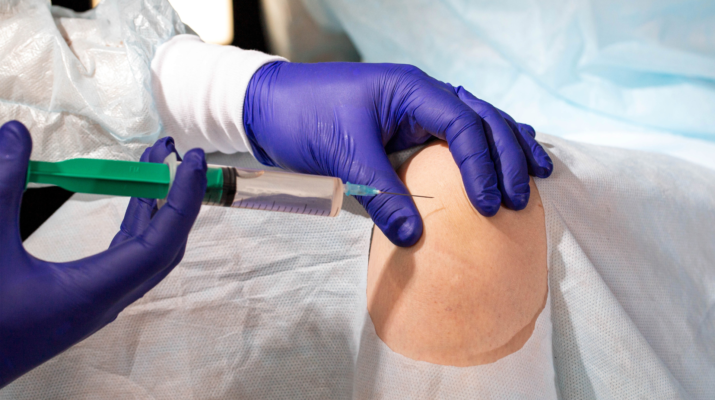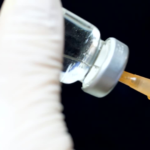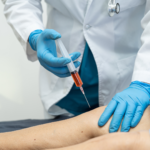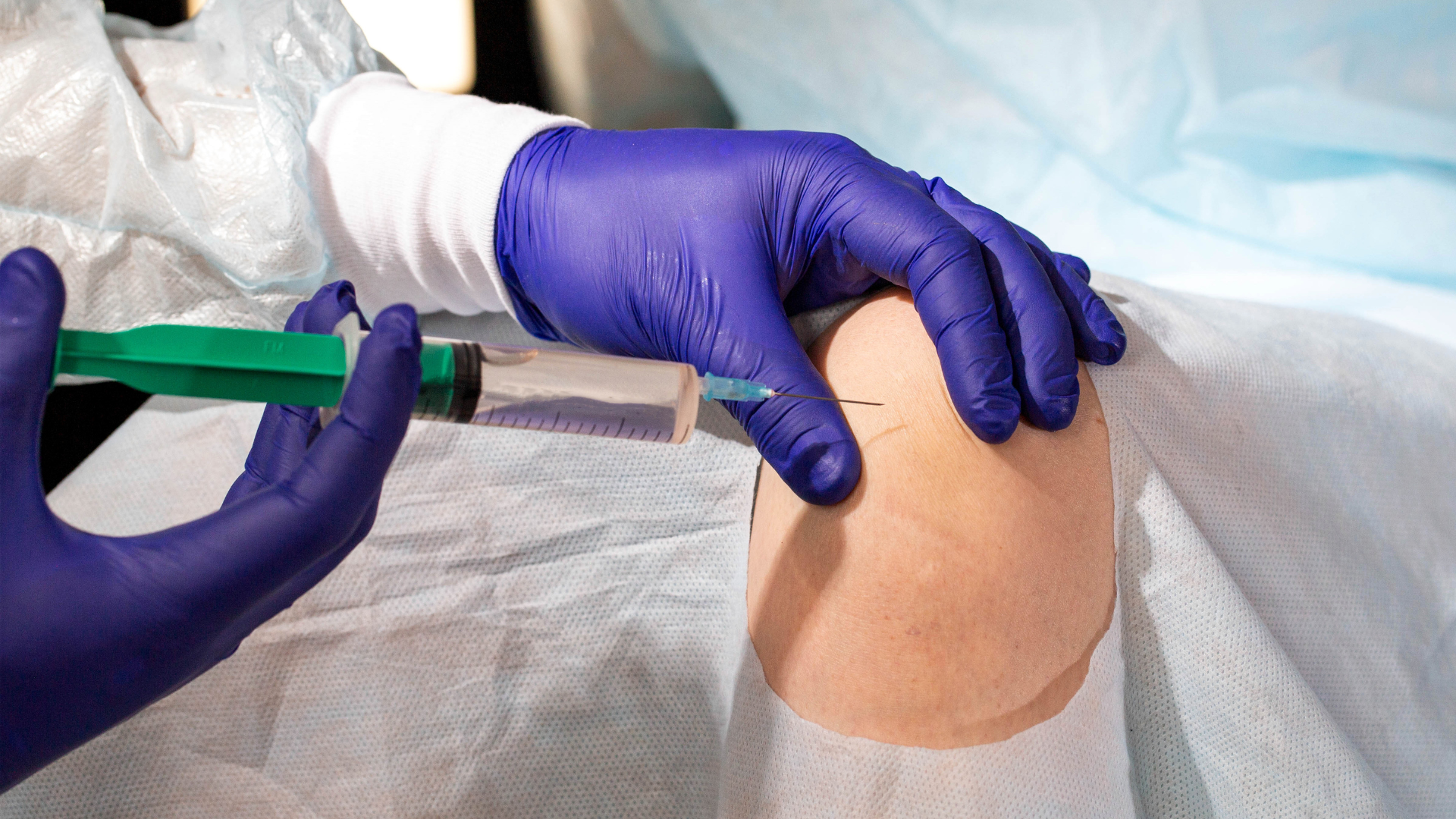
According to Peck et al. (2021), hyaluronic acid injections underscore viscosupplementation as a non-surgical solution that effectively treats knee osteoarthritis. Their comprehensive review emphasizes this treatment’s ability to alleviate pain and enhance the joint’s functional mobility.
Individuals experiencing knee joint pain, swelling, and stiffness may have knee osteoarthritis (OA). As a degenerative joint disease, OA’s symptoms can progressively worsen over time, prompting patients to seek swift and practical solutions. Products like Orthovisc and Synvisc offer non-surgical options, delivering symptomatic relief from knee OA pain.
In this article, we will discuss viscosupplementation, the difference between Orthovisc and Synvisc, and their safety and efficacy.
Key Takeaways
- Viscosupplementation plays a crucial role in knee OA treatment by restoring the viscoelastic properties of the synovial fluid in the knee joint.
- Orthovisc and Synvisc are back on hyaluronic acid (HA), replenishing the lost HA in the synovial fluid, allowing pain-free joint movement and better function and mobility.
- Most studies mentioned that Orthovisc, Synvisc, and other hyaluronic acid injections can deliver up to six months of relief.
- The administration techniques for Orthovisc and Synvisc are similar, requiring direct intra-articular injection into the affected knee joint.
- The common side effects can resolve in a few days or weeks as the body adapts to the medicine. However, if they persist, immediately seek medical attention.
Introduction to Viscosupplementation

Individuals with joint diseases may have heard about this medical procedure as a solution for recurring symptoms. Viscosupplementation has gained attention in recent years, specifically in orthopedic practice, due to its potential in addressing joint conditions. It requires a hyaluronic acid injection directly into the affected joint.
This hyaluronic acid (HA) injection supplements the lost HA in the synovial fluid in viscosupplementation. This allows the affected joint to regain and improve its function and mobility, as well as achieve pain reduction. Various brand names have emerged as effective knee osteoarthritis (OA) treatments.
By bringing this benefit to the affected area, Orthovisc shots for knees or Synvisc can minimize pain while enhancing joint flexibility and movement. The procedure’s non-surgical nature also aids in showing its safety for lesser risks or complications.
Composition of Orthovisc
Anika Therapeutics designed Orthovisc knee injections to address relevant joint diseases such as osteoarthritis (OA). Individuals must complete a series of injections to receive Orthovisc’s maximum benefits and symptomatic relief.
This injection backs on the potency of high molecular weight hyaluronic acid (HA) derived from rooster combs. Its solution shows a thick, sterile, highly purified gel-like substance. HA is a naturally found substance in the body, making it a safe injection therapy for individuals with knee OA.
When medical professionals administer Orthovisc knee injections, they supplement the body’s natural synovial fluid in the knee joint. Orthovisc helps lubricate and cushion the joints as it restores the lost HA, relieving individuals with symptomatic OA.
In their randomized controlled trial, Neustadt et al. (2005) revealed that high molecular weight hyaluronan, like Orthovisc, can also improve clinical outcomes of knee OA patients with an advanced or severe condition.
According to the Food and Drug Administration, Orthovisc underwent a clinical trial that compared the viscosupplement’s efficacy to saline and arthrocentesis control procedures. It showed that four Orthovisc knee injections demonstrated effectiveness to the two therapies, achieving > 40% and > 50% improvement.
Composition of Synvisc
On the other hand, Synvisc is another viscosupplement that treats knee osteoarthritis (OA) pain and other symptoms. It requires three weekly injections to achieve its full effect on knee OA patients. Synvisc is a viscous, sterile solution made from highly purified hyaluronic acid from chicken combs.
The Synvisc manufacturer capitalizes on the high amounts of hyaluronic acid (HA) discovered in this source. Like Orthovisc, Synvisc adds the body’s synovial fluid into the affected knee joint.
Once administered directly into the joint, the injection acts as a lubricant and shock absorber for pain-free and improved joint movement. Synvisc can restore the cushioning and lubricating properties of the joint fluid.
According to Migliore et al. (2010), Synvisc demonstrated its safety and efficacy in minimizing pain and improving joint function in individuals with knee and hip OA. However, its use for other joints needs further clinical evidence to show its efficacy.
Furthermore, Kearey et al. (2016) conducted a study to assess the quality of life improvement after Synvisc’s single injection. The observations showed statistically significant clinical improvements in pain, stiffness, function, etc.
Comparative Analysis of Clinical Efficacy

While clinical trials comparing Orthovisc vs Synvisc are limited online, their clinical trials have shown their safety and efficacy in treating knee osteoarthritis symptoms. Moreover, McElheny et al. (2019) conducted a systematic review that showed that the number of injections of various viscosupplementations does not consistently and significantly differ in efficacy.
Interestingly, a clinical trial directly compared Orthovisc vs Synvisc. The double-blind clinical trial demonstrated that both treatments resulted in similar pain level reduction and duration that lasted up to six (6) months after their complete cycle.
It’s worth noting that viscosupplementation only offers a temporary solution to knee OA patients. However, medical professionals may suggest repeat treatments to maintain the pain relief brought by these injections.
Patients with early to milder knee OA can experience relief and better joint movement for several months. While most patients may benefit from these injection therapies, viscosupplementation’s overall effectiveness and long-term advantages still need further research and trials.
Dosing Regimens and Administration
Patients must receive complete Synvisc or Orthovisc shots for their knees to achieve optimal treatment results. Medical professionals can tailor a treatment plan for each individual based on their specific needs, desired goals, knee osteoarthritis (OA) condition, and overall health. This can reduce complications and health compromise.
- Recommended Dosing Schedules for Orthovisc: The typical Orthovisc dosage requires 2 mL of the solution per knee. Individuals should receive an intra-articular Orthovisc knee injection once a week for three to four weeks.
- Recommended Dosing Schedules for Synvisc: This treatment also requires a series of injections. Synvisc is typically given as a 3 mL three-injection therapy once a week with a week-long interval. However, individuals may also encounter Synvisc-One, which offers a single-injection treatment.
The administration techniques for Orthovisc and Synvisc are similar, requiring direct intra-articular injection into the affected knee joint. However, the injection frequency and dosage regimen differ, which are 2 mL for Orthovisc and 3 mL for Synvisc.
Safety Profiles and Adverse Reactions

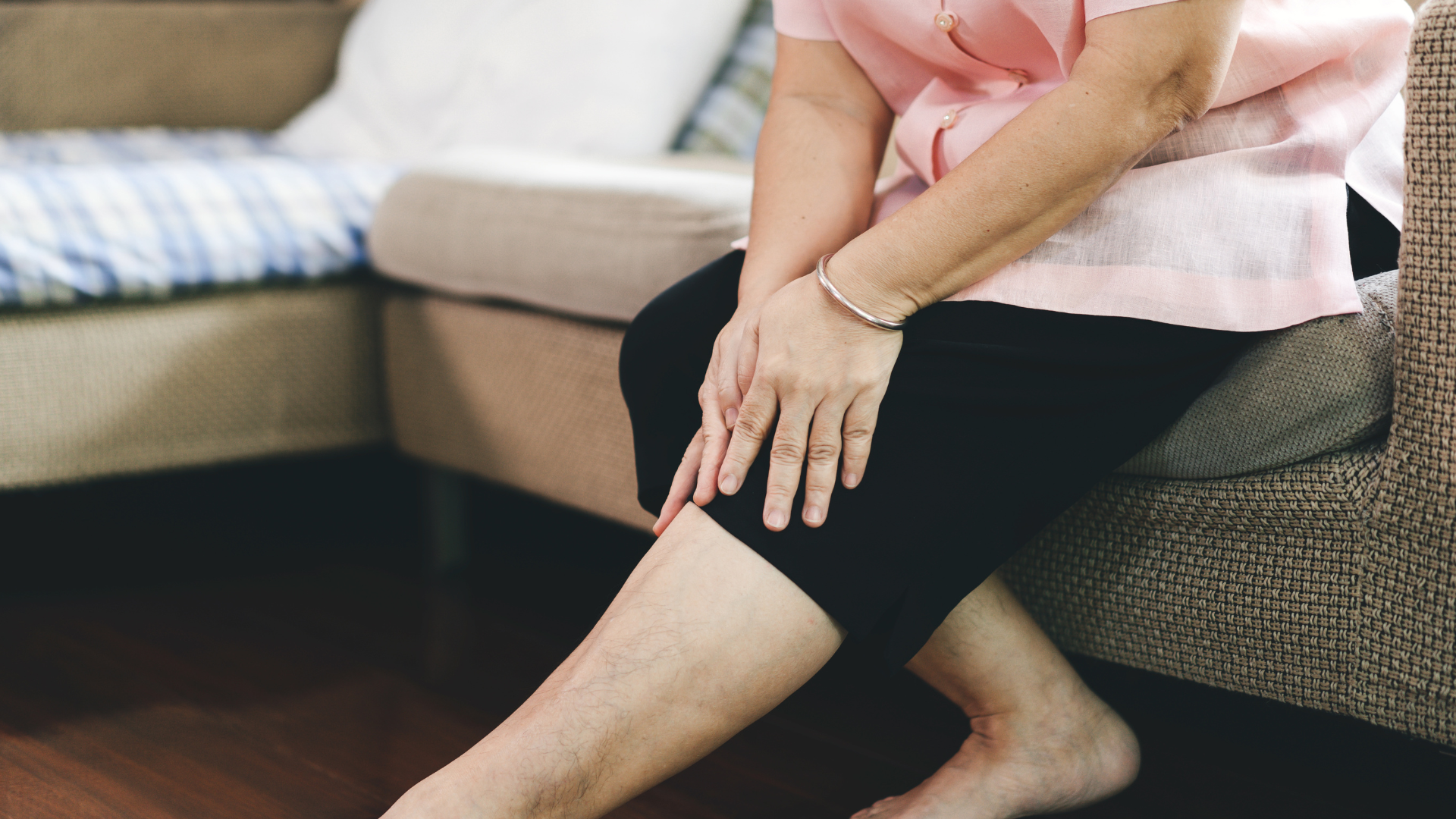
Like any other medical or aesthetic treatment, patients who receive Orthovisc and Synvisc injections can expect side effects after the injections. The common side effects can resolve in a few days or weeks as the body adapts to the medicine. However, if they persist, immediately seek medical attention.
- Orthovisc Common Side Effects: Pain, swelling, heat, rash, itching, bruising, and redness.
- Synvisc Common Side Effects: Pain, swelling, heat, redness, and fluid build-up around the knee.
According to Synvisc, healthcare providers must strictly follow these few contraindications to avoid further complications.
- Patients allergic to avian proteins, feathers, or egg products
- Patients who have evidence of lymphatic or venous stasis in the leg
- Patients who have severe inflammation in the knee
Additionally, Orthovisc added several contraindications to ensure that medical professionals could administer the injections safely and effectively to patients.
- Do not administer to patients with known hypersensitivity to hyaluronate preparations.
- Do not administer to patients with known allergies to avian or avian-derived products (including eggs, feathers, or poultry).
- Do not inject Orthovisc in the knees of patients with infections or skin diseases in the injection site or joint area.
Conclusion
Orthovisc and Synvisc play a significant role in viscosupplementation, offering non-surgical knee osteoarthritis (OA) options. They share similarities in the mechanism of action, hyaluronic acid composition, and direct administration into the knee joint. However, they may differ slightly in their injection frequencies and schedules.
The clinical studies of their safety and efficacy showed significant and positive patient treatment outcomes. While side effects may inevitably occur, patients need to consult with their trusted medical providers to determine the most appropriate injection therapy for their knee OA condition.
FAQs
1) What is viscosupplementation?
This medical procedure is a non-surgical option for knee osteoarthritis (OA) patients. Viscosupplementation requires hyaluronic acid injections directly into the affected knee joint to bring symptomatic relief.
2) Which has a better clinical efficacy, Orthovisc or Synvisc?
According to their clinical studies, both Orthovisc and Synvisc can deliver significant symptomatic relief to patients. However, patients should consult their healthcare providers for the best treatment option for their OA condition.
3) How many injections do Orthovisc and Synvisc need?
Orthovisc may require three to four injections, given weekly with a full-week interval. On the other hand, Synvisc needs three injections in a similar administration schedule, one weekly with a full-week interval.
4) What are their common side effects?
Patients may expect to encounter common side effects after Orthovisc or Synvisc treatments. This includes pain, swelling, heat, rash, itching, bruising, or redness.
References
- Peck, J., Slovek, A., Miro, P., Vij, N., Traube, B., Lee, C., Berger, A. A., Kassem, H., Kaye, A. D., Sherman, W. F., & Abd-Elsayed, A. (2021b). A Comprehensive Review of Viscosupplementation in Osteoarthritis of the Knee. Orthopedic Reviews. https://doi.org/10.52965/001c.25549
- ORTHOVISC® High Molecular Weight Hyaluronan. (n.d.). accessdata.fda.gov. https://www.accessdata.fda.gov/cdrh_docs/pdf3/P030019c.pdf
- McElheny, K., Toresdahl, B., Ling, D., Mages, K., & Asif, I. (2019). Comparative Effectiveness of Alternative Dosing Regimens of Hyaluronic Acid Injections for Knee Osteoarthritis: A Systematic Review. Sports health, 11(5), 461–466. https://doi.org/10.1177/1941738119861545
About: Medica Depot is your trusted all-in-one supplier, offering a range of high-quality medical injectables and supplies. If you’re looking to buy Orthovisc, you can do so on Medica Depot quickly and easily. We offer a worry-free experience in searching for the best and most popular products on the market. Whether for health professionals, plastic surgeons, dermatologists, licensed estheticians, or other specialists, we can offer genuine, brand-name products you may need. With Medica Depot, we prioritize serving you better to improve the patient’s quality of life.
Buy aesthetic products refers to the act of purchasing items that are specifically designed for enhancing or maintaining beauty, often related to skincare, cosmetics, or procedures in the field of aesthetics. These products can include a wide range of items intended to improve the appearance and health of the skin, hair, and body. Here are some examples of aesthetic products that individuals might purchase:
-
Skincare Products: Including cleansers, moisturizers, serums, and treatments targeting specific skin concerns such as acne, aging, hyperpigmentation, and sensitivity.
-
Cosmetics: Makeup products such as foundations, concealers, eyeliners, lipsticks, and eyeshadows designed to enhance facial features and achieve desired looks.
-
Hair Care Products: Shampoos, conditioners, styling products, and treatments to maintain and improve the health and appearance of hair.
-
Dermatological Treatments: Prescription or over-the-counter treatments for medical conditions like acne, eczema, psoriasis, or rosacea.
-
Aesthetic Devices: Equipment used for professional treatments including laser devices, microneedling pens, radiofrequency devices, and IPL (Intense Pulsed Light) machines.
-
Injectable Aesthetics: Products such as dermal fillers and botulinum toxin (Botox) used to enhance facial contours, reduce wrinkles, and achieve smoother skin.
-
Nutritional Supplements: Supplements aimed at promoting skin health, hair growth, and overall well-being, often containing vitamins, minerals, and antioxidants.
-
Home Use Beauty Devices: Devices like facial cleansing brushes, LED light therapy masks, and microcurrent devices designed for at-home skincare treatments.


